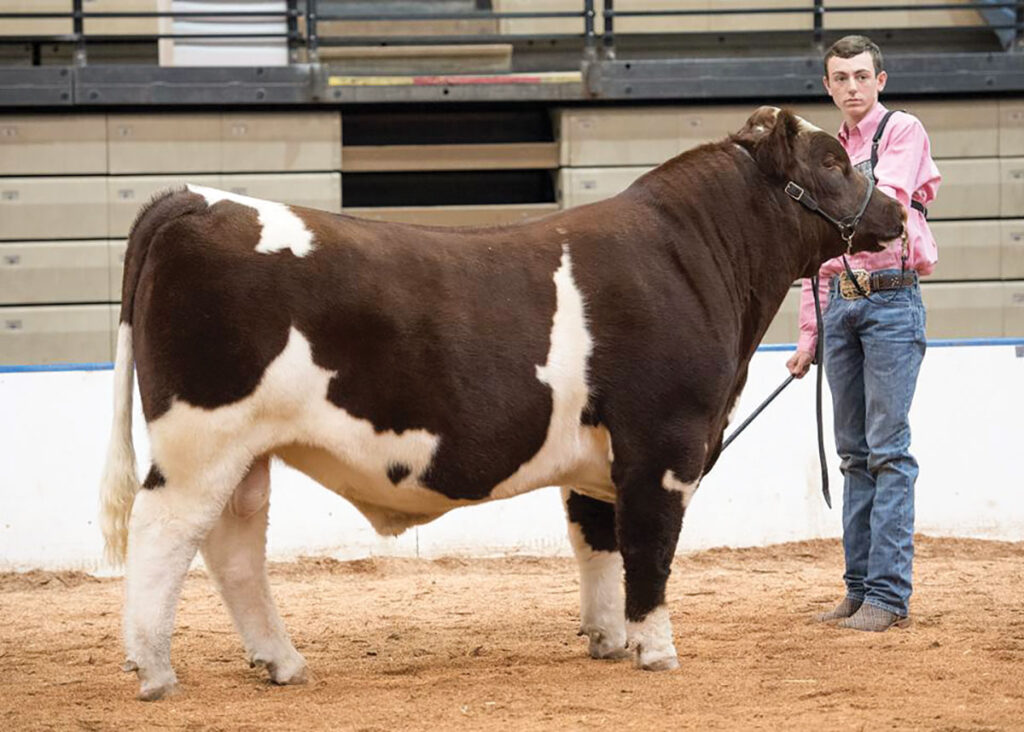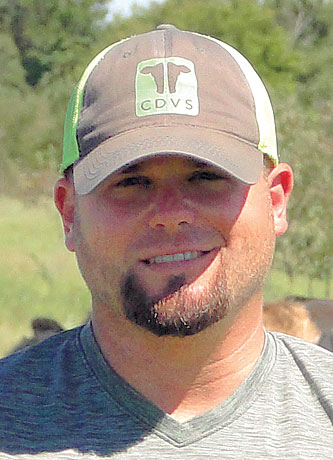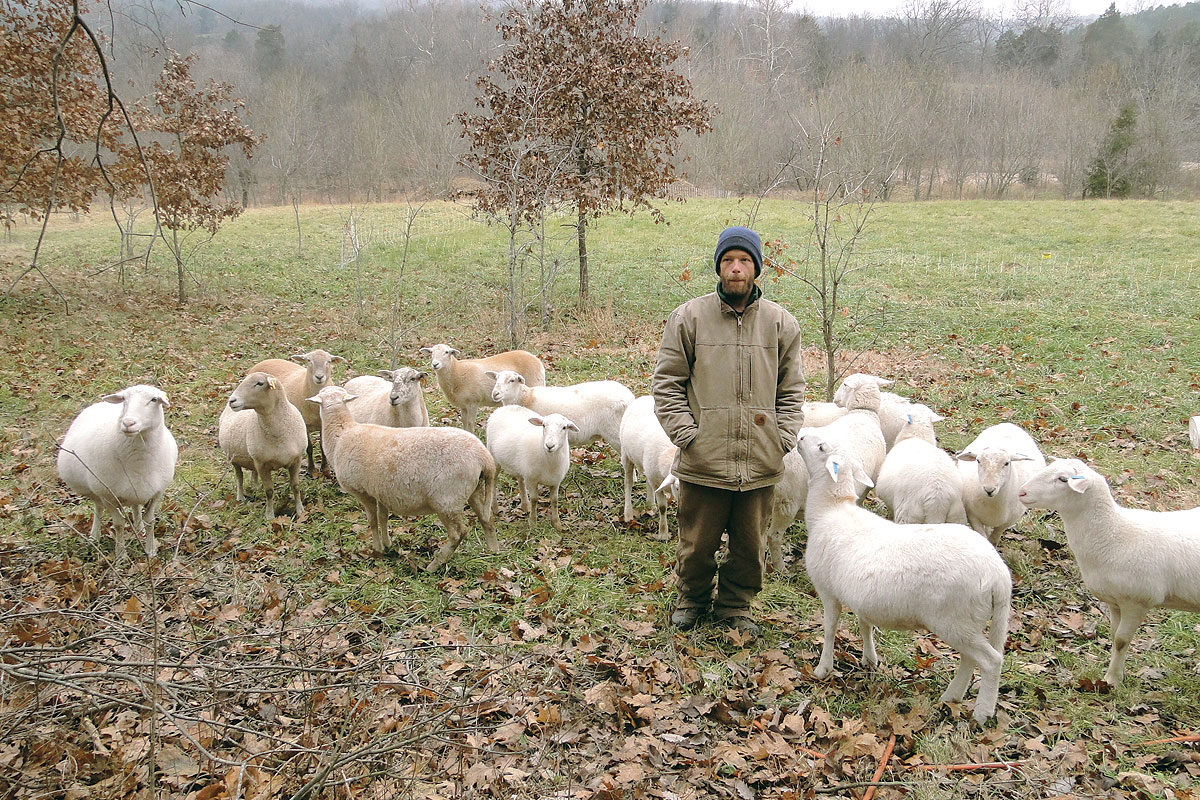
Lane Cattle works to develop Shorthorns that excel in the show ring and the pasture
JAY, OKL.A – Will and Jennifer Lane believe in raising their children in a barn.
The Lane children have all shown cattle since they were old enough to walk, said Will, who along with his wife Jennifer, are owners of Lane Cattle Ranch in Jay, Okla.
Will’s family motto is “Purple banners do not make a champion, hard work does.”
Ryan serves on the Shorthorn Junior Board of Directors and is a freshman at Northeast Oklahoma A&M College, Lexi and Bri attend Grove Schools, where they area a sophomore and senior, respectively.
“The girls do the bulk of the show barn everyday duties,” Will said. “They put the show calves in the barn and feed before school and then work with them, and feed and turn out at night. It takes a level of commitment a lot of kids do not have these days.”
The goal of Lane Cattle is to produce show-quality projects that can continue to be profitable cows for their new owners after their show career is over, Will said.
“We have found Shorthorn to be a great cow for us,” Will said.
Shorthorn cattle are very maternal and have great dispositions, he said. “It is nice when you can wean them and have them gentle and broke in just a few days with little effort,” Will said.
“When you have off-the-farm jobs like we do it is very important to have easy to work cattle. Having a breed that is easy to work with makes it possible for us to care for them.”
Lots of days, especially in the winter, Will checks and feeds the cattle before and after work in the dark.
Most heifer calves are show projects for FFA and 4-H members, he said.
“Shorthorn cattle provide very good carcasses,” Will said. “We sell a majority of our steer calves as freezer beef to mainly repeat customers because of the quality of the meat.”
Lane Cattle has a waiting list as a testament to the quality of the beef, he said.
The genesis of Lane Cattle started when Will was a freshman at Jay High School.
“I got my first registered Shorthorn on May 13,1988,” Will said. “Our operation started as a FFA project for myself.”
The heifer came from Jack Bedwell and Sons in Okeene, Okla.
“Throughout the years, we have improved on our cow herd by purchasing the best bulls and cows the family budget would allow,” he said.
Lane Cattle are vaccinated twice a year and usually worm three to four times per year, depending on the condition of the cows, Will said.
“Cattle in the show barn get wormed every 45 days,” Will said. “We work very closely with our local veterinarians. They see our cows a couple times a year and we try and follow the protocols set for us to keep our herd healthy.”
While in college, Will’s parents kept the cows for their son until he was settled and had his own place.
Lane Cattle has 50 head and Will’s parents have about 25 head that graze on 100 acres.
“With the cost of land, we have to maximize every acre,” Will said. “We rotational graze the cows when we can and purchase all of the hay we use.”
Lane Cattle purchases hay from its neighbors cutting down on the cost of transportation.
“We creep feed our calves from an early age,” Will said. “We found to sell a show calf they have to be fleshy and ready to go at an early age.”
Creeping the steers that end up as freezer beef adds to the meat’s quality and makes them marble better at a younger weight, he said.
The result is a two-time National Champion Bull and several heifers taking divisional winners.
“Our current clean up bull was the National Champion Shorthorn bull in 2000,” Will said.
Lane Cattle competes at most of the local and state livestock shows and national events including, Cattlemen’s Congress in Oklahoma City and The American Royal in Kansas City, Mo.
“We try and sell some of our top end prospects while at the different shows,” Will said.
Lane Cattle uses artificial insemination and embryo transfer, Will said.
“We try to flush one or two cows per year and put those embryos in fresh each year,” Will said. “I don’t believe in keeping many embryos in storage as I feel the quicker you get them in production the faster you will improve your cow herd.”
“The two bulls we have now one is a past National Champion and the other is being used by multiple other breeders in their own AI programs,” Will said.
Lane Cattle has two calving seasons – spring and fall.
“I prefer to calve in the fall because the weather is usually better and easier on us as the producer,” Will said. “We end up having a few more spring calvers as we have more demand for spring born heifers.”







